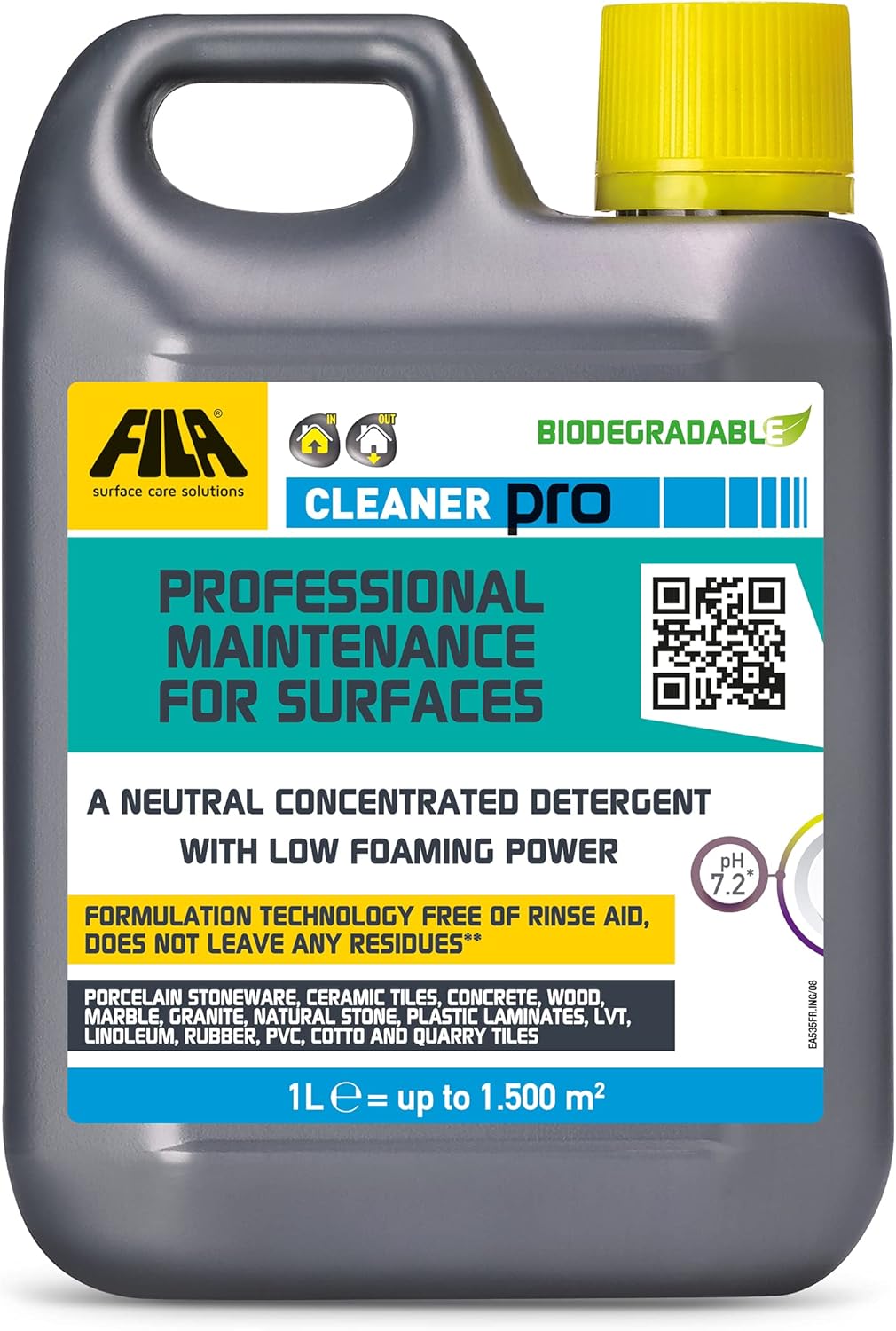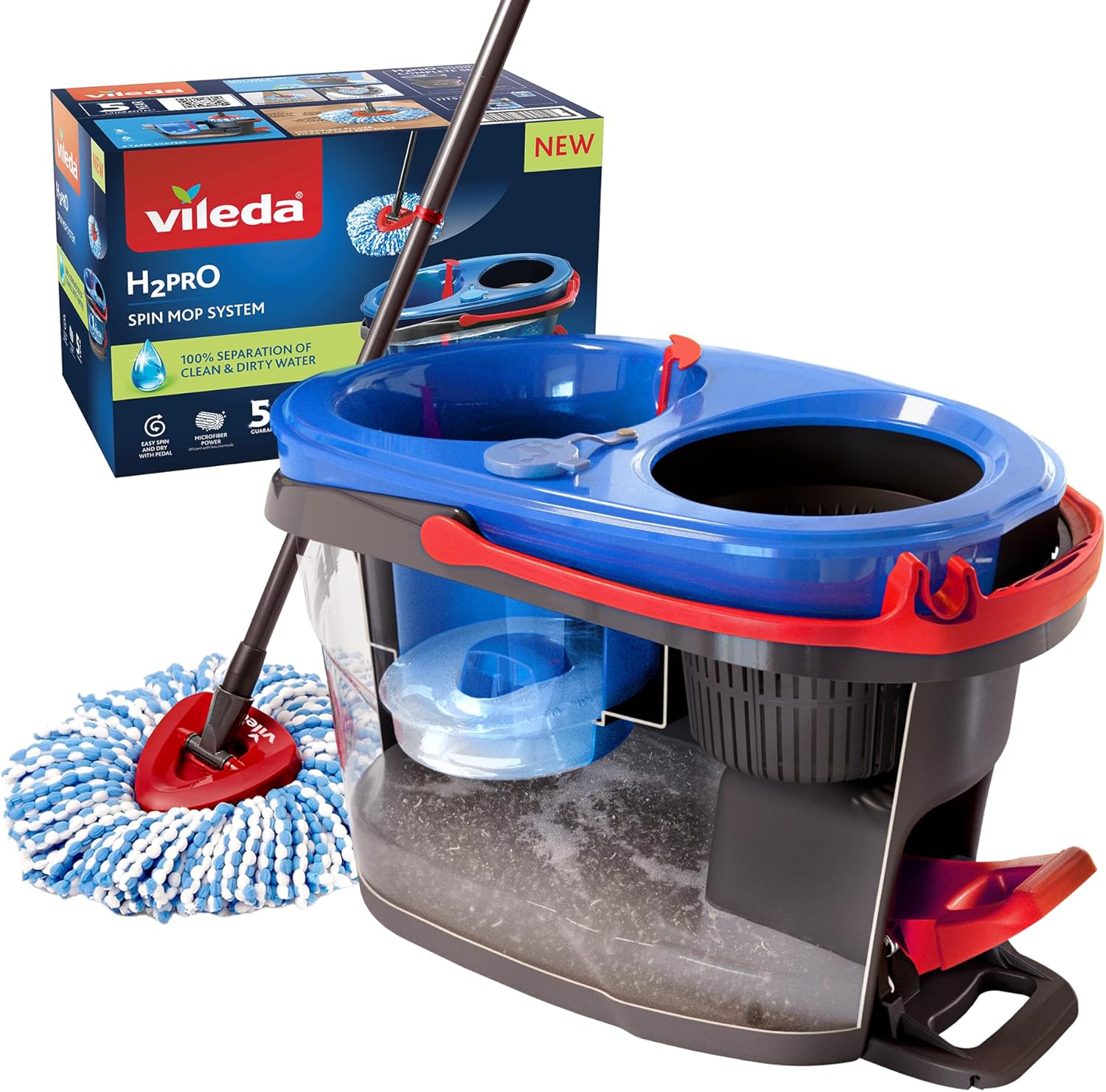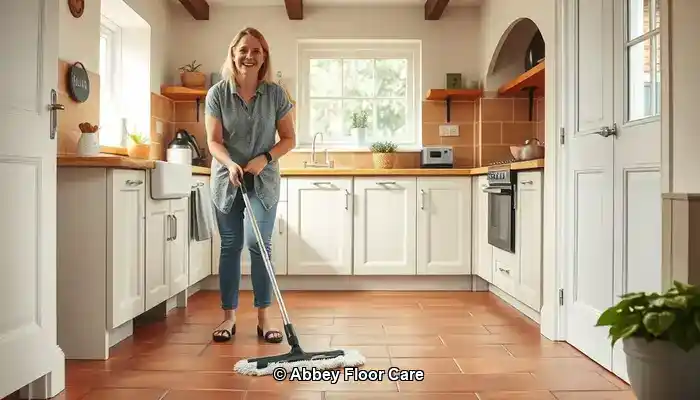Last Updated on September 29, 2025, by David
Essential Insights for Maintaining Clean Terracotta Floors
-
- Terracotta is highly porous, rendering it susceptible to quick dirt absorption, particularly in humid climates such as Surrey.
- Effective sealing is crucial to avert moisture and dirt from seeping into the tile surface.
- Regular maintenance is vital—daily sweeping and weekly mopping with pH-neutral cleaners are essential for preserving the tile’s aesthetic appeal.
- Avoid harsh chemicals and steam mops, which can compromise the sealant and damage the tile.
- Eco-friendly products are highly recommended, particularly in households with pets or children.
- Professional restoration services provide deep cleaning and resealing for long-term protection.
- Strategically placing rugs and mats in high-traffic areas can significantly reduce the transfer of dirt.
- Effective moisture management is key—ensuring proper ventilation and promptly cleaning up spills helps prevent staining and mould growth.
What Causes Terracotta to Become Dirty So Quickly?

Terracotta Cleaning: Terracotta tiles are an exquisite option for flooring, particularly in traditional or rustic-style homes found throughout Surrey. Their warm hues and natural texture contribute significant character and charm to any interior space. However, despite its aesthetic appeal, terracotta is notoriously susceptible to dirt accumulation quite rapidly. Understanding the underlying reasons for this tendency is crucial to maintaining cleanliness effectively.
Pro Tip: Recommended Products for Daily Terracotta Maintenance

Fila Pro Floor Cleaner
|

LTP Floorshine
|

Vileda H2PrO Spin Mop System
|
Understanding Porosity: The Hidden Culprit Behind Dirt Accumulation
Terracotta is crafted from natural clay and fired at lower temperatures than other types of tiles. This unique manufacturing process results in a highly porous surface that absorbs moisture, oils, and dirt, akin to a sponge. In practice, this inherent porosity facilitates the deep penetration of grime into the tile, making its removal with standard cleaning techniques significantly more challenging.
Unsealed terracotta is particularly at risk. Without a protective layer, even minor spills or muddy footprints can leave enduring marks. Over time, these factors lead to a dull, stained appearance that is difficult to restore without professional intervention.
How Does Surrey’s Climate Influence Terracotta Cleanliness?
The climate in Surrey significantly affects how quickly terracotta floors accumulate dirt. The region's frequent rainfall and damp conditions lead to increased moisture tracked indoors, particularly in entryways and conservatories.
Properties situated near wooded areas or gardens are even more susceptible. Soil, pollen, and organic debris can effortlessly find their way onto terracotta surfaces, especially if footwear is not removed at the entrance.
What Everyday Habits Contribute to Increased Dirt Build-Up?
In addition to environmental factors, daily habits can exacerbate the issue. Using inappropriate cleaning products—such as acidic solutions or bleach—can strip protective coatings and damage the tile’s surface. While steam mops are often favoured for their convenience, they can inadvertently force moisture deeper into the tile, compounding cleanliness issues.
High-traffic areas like kitchens and hallways are inherently more prone to wear and tear. Without consistent sweeping and mopping, dirt can accumulate swiftly and become entrenched in the tile’s texture.
Effective Preventive Measures for Immaculate Terracotta

Maintaining pristine terracotta floors requires more than merely reacting to dirt; it necessitates proactive measures to prevent grime from settling in the first place. In Surrey, where damp weather and garden traffic are common, diligent care is critical to preserving the natural beauty of terracotta tiles.
Sealing: The First Line of Defence for Your Terracotta
The most efficient way to prevent terracotta from quickly becoming dirty is proper sealing. A high-quality, breathable sealant establishes a protective barrier that repels moisture, oils, and dirt. For properties in Surrey, where humidity levels can vary, sealing is essential to inhibit water absorption that can lead to staining and mould growth.
Experts recommend resealing terracotta every 12 to 18 months, depending on foot traffic and exposure levels. In areas such as kitchens, hallways, and conservatories—frequent-use zones—more frequent sealing may be warranted. Always opt for a sealant designed specifically for porous stone, and avoid glossy finishes that can trap dirt on the surface.
Smart Layout Choices: The Impact of Rugs and Mats
Strategically positioning rugs and mats can dramatically minimise the volume of dirt that reaches your terracotta tiles. Employ heavy-duty doormats at entrances to capture mud and moisture before they infiltrate your indoor spaces. In high-traffic areas like hallways or beneath dining tables, area rugs act as a protective barrier, shielding tile from wear and tear.
For rooms connected to outdoor spaces, consider washable runners that can be cleaned routinely. These not only help to preserve the tile but also infuse warmth and style into your interior design.
How to Manage Moisture Effectively in Surrey Homes
The prevalent climate in Surrey, characterised by its rain and dampness, can accelerate the accumulation of dirt on terracotta. To combat this, it is advisable to use dehumidifiers in enclosed areas and ensure effective ventilation throughout your home. Promptly wipe up spills and refrain from leaving wet items—such as shoes or towels—on the floor.
If your terracotta is installed in a conservatory or garden room, consider fitting blinds or UV filters to mitigate condensation and prevent sun damage. These minor adjustments can yield significant benefits for the longevity of your tiles.
By combining sealing, intelligent design choices, and moisture management, homeowners in Surrey can substantially reduce the rate at which terracotta floors become dirty. In the following section, we will explore optimal cleaning practices to maintain a fresh and natural appearance day after day.
Optimal Cleaning Practices for Terracotta Tiles

Even with appropriate sealing and preventative measures, terracotta floors require consistent care to maintain their natural allure. The key lies in using the right techniques and products that clean effectively without damaging the tile's porous surface.
Establishing a Daily and Weekly Maintenance Routine
In Surrey homes, where outdoor elements frequently enter, daily sweeping or vacuuming is imperative. Use a soft-bristle broom or a vacuum with a hard-floor setting to remove dust, grit, and organic debris before it settles into the tile.
For weekly maintenance, mop the floors with warm water and a pH-neutral cleaner specifically designed for natural stone. Avoid soaking the floor—damp mopping is preferred. Excess water can seep into the tile, leading to staining or mould growth, particularly in older or inadequately sealed installations.
Choosing the Right Cleaning Products for Terracotta Maintenance
Select products that are both gentle and effective. Look for labels that indicate “stone-safe,” “non-acidic,” or “pH-neutral.” In Surrey, where eco-conscious living is increasingly valued, many homeowners favour biodegradable cleaners that are safe for both pets and children.
Avoid multi-surface cleaners containing bleach, ammonia, or citrus extracts. These substances can strip away sealants and etch the terracotta, leaving it vulnerable to future staining.
For persistent spots, use a soft cloth with a diluted solution of stone cleaner. Never scrub with abrasive pads or wire brushes—these can scratch the surface and complicate future cleaning efforts.
What to Avoid: The Risks of Harsh Chemicals and Steam Cleaning
Though steam mops may appear convenient, they are ill-suited for terracotta. The high heat and moisture can seep into the tile, weakening the sealant and causing long-term damage. Similarly, acidic cleaners such as vinegar or lemon juice—even when diluted—can erode the tile’s surface and result in discolouration.
Stick to gentle cleaning methods and consistently test new products on a small, inconspicuous area before applying them across your floors.
Professional Care vs DIY Maintenance for Terracotta Floors
When it comes to maintaining terracotta floors, many homeowners in Surrey start with DIY methods. While routine sweeping and mopping can certainly help, there comes a point at which professional assistance becomes necessary.
When Should You Contact a Tile Specialist in Surrey?
If your terracotta tiles exhibit signs of deep staining, uneven colour, or surface wear, it may be time to seek expert assistance. Professional tile care specialists in Surrey utilise advanced equipment and stone-safe products that penetrate deeper than household cleaners. They can also evaluate whether your sealant has deteriorated and recommend an appropriate resealing schedule tailored to your home’s specific conditions.
Restoration services typically encompass deep cleaning, stain removal, and the reapplication of breathable sealants that protect without altering the tile’s natural appearance. For older homes or heritage properties, specialists can even replicate the original finish to maintain authenticity.
Evaluating Cost versus Longevity: Is Professional Care Worth It?
While DIY cleaning may initially seem more cost-effective, it often yields only temporary results. Without proper sealing and deep cleaning, dirt continues to accumulate—leading to more frequent maintenance and the risk of permanent damage.
In contrast, professional care prolongs the lifespan of your terracotta floors. A single restoration session can revitalise colour, eliminate embedded grime, and safeguard the surface for months or even years. In high-traffic areas, such as kitchens or hallways, this investment pays dividends in reduced maintenance and enhanced visual appeal.
Surrey homeowners who prioritise long-term property care and curb appeal often discover that professional services offer peace of mind and superior results. Furthermore, many local providers offer eco-friendly options and customised maintenance plans to align with your lifestyle.
Eco-Friendly and Safe Cleaning Solutions for Terracotta
Terracotta’s natural charm deserves care that aligns with environmental sustainability. For homeowners in Surrey seeking to maintain their floors without compromising health or ecological integrity, eco-friendly cleaning is the ideal approach. Fortunately, contemporary products and techniques help protect your tiles—and your household—without resorting to harsh chemicals.
Choosing Non-Toxic Sealants and Cleaners
Traditional sealants often contain solvents that emit volatile organic compounds (VOCs), which can linger in the air and negatively impact indoor air quality. Current eco-friendly alternatives employ water-based formulas that are low in VOCs and safe for use around children and pets.
When selecting a cleaner, seek out labels that specify “biodegradable,” “plant-based,” or “stone-safe.” These products are formulated to lift dirt without damaging terracotta's porous surface. Brands that focus on natural stone care frequently offer concentrated solutions that can be diluted for daily use, minimising waste and packaging.
Safe Alternatives for Homes with Pets and Children
In busy households throughout Surrey, safety must be as paramount as cleanliness. Steer clear of bleach, ammonia, and acidic cleaners like vinegar, which can inflict damage on the tile and pose risks to pets and young children. Instead, choose gentle formulas derived from coconut oil derivatives, citrus enzymes, or mineral-based ingredients.
For those who enjoy DIY cleaning, a simple mixture of warm water and a few drops of castile soap can be surprisingly effective for light cleaning. However, always conduct a test on a small area first to ensure it does not adversely affect the sealant or finish.
Embracing Sustainable Cleaning Practices
Eco-friendly upkeep extends beyond product selection—it also encompasses cleaning habits. Utilise reusable microfiber cloths and mops instead of disposable pads. Regular sweeping helps reduce the necessity for frequent wet cleaning. When resealing, opt for products with recyclable packaging and a minimal environmental impact.
Numerous floor care professionals in Surrey now offer green cleaning packages that utilise certified, non-toxic products and sustainable methods. If you are unsure where to begin, scheduling a consultation with a local expert can help you develop a routine that is both effective and environmentally conscious.
Ensuring Your Terracotta Floors Remain Pristine
Terracotta flooring adds warmth, character, and timeless elegance to homes in Surrey; however, its porous nature requires careful maintenance to keep it clean and vibrant. By recognising the reasons terracotta tiles become dirty quickly, ensuring proper sealing, and adopting smart cleaning habits, you can significantly reduce grime accumulation and extend the lifespan of your tiles.
Whether you are managing a bustling household or restoring a historic property, consistency is key. Daily sweeping, pH-neutral cleaning, and seasonal resealing contribute significantly to maintaining an attractive exterior. When stains or wear begin to manifest, do not hesitate to enlist the services of a local specialist for professional restoration.
Utilising eco-friendly products and safe cleaning routines guarantees your floors remain beautiful while safeguarding your health and the environment. With the right approach, terracotta can remain a stunning feature in your home for many years to come.
Are you ready to protect your floors intelligently? Contact us today for expert terracotta maintenance tailored to Surrey's unique conditions. Let’s ensure your home looks its finest—naturally.
Frequently Asked Questions About Terracotta Maintenance
Terracotta floors are a classic choice, but they require specific care. Below are answers to some of the most commonly posed questions from Surrey homeowners eager to keep their tiles clean, protected, and visually appealing.
How Frequently Should I Reseal My Terracotta Tiles?
In most Surrey residences, terracotta should ideally be resealed every 12 to 18 months. However, this may vary depending on factors such as foot traffic, moisture exposure, and whether the tiles are installed indoors or outdoors. Areas such as kitchens, hallways, and conservatories may necessitate more frequent resealing. If your tiles appear to be absorbing water or look dull, it is time to consider resealing.
Can I Use Vinegar or Bleach on Terracotta Tiles?
No—vinegar, bleach, and other acidic or harsh cleaners can be detrimental to terracotta. These substances degrade sealants and etch the tile’s surface, leading to irreversible discolouration. Always opt for pH-neutral, stone-safe cleaners intended for porous flooring.
What Type of Mop is Best for Terracotta Floors?
A microfiber mop is ideal for terracotta flooring. It effectively traps dust and dirt without scratching the surface and uses minimal water, which is critical for porous tiles like terracotta. Avoid sponge mops or steam mops, which can oversaturate the tiles and weaken the sealant.
Is It Safe to Use DIY Cleaning Solutions on Terracotta?
Yes, but caution is advised. A mild mixture of warm water and castile soap can be effective for light cleaning. Always test any homemade solution on a small, hidden area initially. Avoid anything acidic or abrasive, and refrain from using homemade cleaners on unsealed tiles.
What Should I Do If My Tiles Are Already Stained?
If stains have set into your terracotta tiles, professional restoration is the most effective route. Tile care specialists based in Surrey can perform deep cleaning, remove embedded grime, and reseal the surface to restore the tile’s original colour and texture. DIY methods may exacerbate the damage if inappropriate products are used.
The Article: Tired of Dirty Terracotta? How to Keep It Clean Longer was first found on https://www.abbeyfloorcare.co.uk


